Environment and Identity: A Fragile Balance
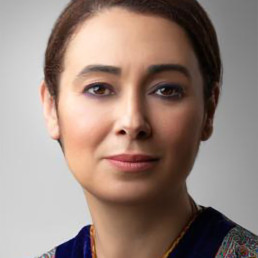
Written by Rachida Dahman
Rachida Dahman is an international educator, a language and literature teacher, and an educational innovator. She started her career in Germany as a teacher trainer advocating the importance of relationships above academics. She then moved to Luxembourg where she teaches German language and literature classes to middle and high school students. She is an award-winning poet, co-author of the best-selling book, ATLAS DER ENTSCHEIDER Entscheiden wie die Profis- Dynamik, Komplexität und Stress meistern.
In a complex world with complex problems, young people are struggling to uncover their identities. Social media and social constructs simplify thinking into binary perspectives that are limiting their capacities to grow and develop an understanding of themselves and the world. Unfortunately, some school curricula and environments may be contributing to this growing problem that directly impacts student wellbeing.
So much of students’ worlds seem to fall into a good/bad, right/wrong, preconstructed view of what they should think, believe, feel, and who they should or should not be. In this binary construct, students are not able to explore their own perceptions, opinions, or understandings because they have not had the freedom to develop the ability to observe, ask questions, discuss, and learn about differing perspectives in a constructive way. Schools should strive to create an environment that welcomes and encourages students to share, explore, and grow. In order for them to feel safe to do so, the atmosphere must not be argumentative. Rather, it must be one that approaches differences from a lens of love and learning.
It may seem easier to avoid discussing controversial topics in order to steer away from conflict and difficulty that stir emotions. However, when we participate in this avoidance, we miss out on an opportunity to teach students how to explore their feelings, have rigorous, meaningful conversations, and learn from those with differing viewpoints in a positive way. By modeling an avoidance behavior, we are inadvertently supporting this binary way of thinking that leads to a hindrance in student growth. In order to assist in students’ development, schools can create an environment where people are able to discuss controversial subjects in a respectful way that comes from a place of learning, understanding, and growing rather than judgment.
Schools should be a safe place for contemplation, evaluation, and learning and not one that prescribes what students should think and how they fit into a pre-described way of being. This freedom, or lack thereof, has a direct impact on student wellbeing. Educators should be inviting students each morning to feel strong and capable, supporting them in framing their own personalities and identities. In order to do that, they must feel safe sharing who they are in an environment designed to listen and learn without fear of others jumping into a defensive or attack mode. A safe space environment is cyclical in nature. In order for students to feel heard without judgment they must also learn to listen without judgment. One cannot occur without the other.
Students must learn to find value in the opinions, thoughts, and beliefs of others. Educators can assist in this learning by teaching students that there are 101 perspectives on the same problem. Rather than always presenting a definitive answer, issues can be explored from various angles. In addition, we must teach and model the use of kind words that are full of love rather than aggression, and that strive to unite rather than divide. As you enter your schools every day, ask yourselves these questions:
- Am I encouraging differing viewpoints and creating a safe space for them to be shared?
- Am I modeling a behavior of openness for judgment-free conversations?
- Am I demonstrating kind, accepting language?
- How can I help students to avoid defensive or aggressive language and responses?
The formation of identity and wellbeing is fragile. Schools have a responsibility to create environments that are conducive to open discussions, free from aggression, and safe for honest and authentic conversations geared toward learning, understanding, and growth. It is through this climate of successful cooperation and mutual support that we can counteract the negative impacts of binary thinking and help students create healthy identities.
10 Engaging Diversity Books for Children: Promoting Inclusion and Understanding
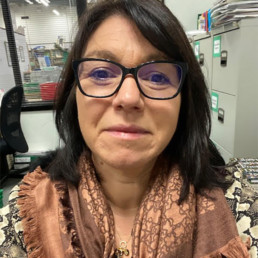
Written by Rachelle Carter
Rachelle Carter is co-director of Madeleine Lindley Ltd, a key children’s book supplier based in Chadderton, Oldham. Its staff are experienced and well-equipped to help primary schools rejuvenate and refresh their class libraries with the latest and most engaging books. The business has played a vital role in supplying many of the UK's primary school libraries for over 35 years.
Reading across a range of cultures and experiences not only broadens children’s worldviews but also nurtures an appreciation of the wider world. Being exposed to a range of books that cover different representations allows children to feel connected and included, and allowing a child to explore various narratives through books through a multitude of narratives is a cornerstone in exposing a child to inclusion and understanding.
Here, children’s literacy specialist Madeleine Lindley Ltd explores ten notable books that celebrate diversity, promote inclusivity, and stimulate the imagination. For primary school teachers, this list can serve as a great starting point from which to build a classroom library or wider school library with books that promote inclusion. It is important to remember that the representation of diversity will differ from classroom to classroom. Use this list to explore the types of books you can consider for your classroom, and explore the broad range of diversity and inclusion books yourself to find the perfect books for your children.
1. Uncle Bobby’s Wedding by Sarah S. Brannen
Uncle Bobby’s Wedding takes a delicate approach to introduce the concept of same-sex marriages. As the story unfolds, young readers journey alongside Chloe, the protagonist who initially fears she will lose her beloved Uncle Bobby when he announces his wedding. The story’s gentle narrative helps children understand that love transcends all boundaries and that families come in all shapes and sizes. Moreover, it instils the idea that a change does not equate to loss, a valuable lesson for children.
2. The Best Me! by Marvyn Harrison
In The Best Me!, Marvyn Harrison promotes the importance of self-esteem and individuality, focusing on the central character’s journey, Nia. Nia learns to embrace her unique identity and sees the beauty in everyone’s differences, breaking away from societal expectations. The book delivers the fundamental message that everyone should feel empowered to be their true selves.
3. The Proudest Blue by Ibtihaj Muhammad and S.K. Ali
The story revolves around Asiya’s first day of school, with her wearing a bright blue hijab. Her younger sister, Faizah, sees Asiya’s hijab as a symbol of pride and strength. The Proudest Blue introduces children to the concept of faith in oneself and the richness of cultural diversity, helping them recognise and respect religious practices that might differ from their own.
4. Grandad’s Camper by Harry Woodgate
Grandad’s Camper presents a loving relationship between Grandad and Gramps. Following Gramps’s passing, Grandad ceases his adventuring until his granddaughter reignites his passion. The book addresses LGBTQ+ relationships and loss sensitively, fostering understanding that love is universal, extending beyond conventional family setups.
5. Speak Up! by Nathan Bryon
Speak Up! is a compelling narrative about using one’s voice to champion what’s right. The protagonist, Rocket, inspires children with her bravery, as she stands up for her community’s park. This story encourages children to be courageous, fostering a sense of responsibility, and motivating them to stand up for what they believe in.
6. Just Like Me by Vanessa Brantley-Newton
Just Like Me is a collection of poetic narratives, celebrating diversity, self-love, and acceptance. Vanessa Brantley-Newton’s character-driven poems encourage children to explore and celebrate their identities, recognising that everyone’s story is unique and equally important.
7. The Bubble Boy by Stewart Foster
The Bubble Boy introduces the character of Joe, a boy with severe combined immunodeficiency who lives in a sterile environment. This narrative fosters empathy, giving children a glimpse into the lives of those living with health conditions, ultimately encouraging them to be understanding and respectful.
8. Jamie: A Joyful Story of Friendship, Bravery and Acceptance by L. D. Lapinski
Jamie paints a picture of an inclusive world where each individual is unique and cherished. The story explores themes of friendship, bravery, and acceptance, helping children appreciate the diverse characteristics that make us all human.
9. Fight Back by A. M. Dassu
Fight Back explores the resilience of a young refugee, teaching children about the realities of displacement and courage. This book encourages understanding of global issues and empathy towards individuals who’ve experienced adversities beyond their control.
10. No Ballet Shoes In Syria by Catherine Bruton
This book captures the experiences of Aya, a refugee girl in Syria who finds solace in the world of ballet. No Ballet Shoes In Syria allows children to empathise with the struggles of refugees and appreciate the power of passion, dedication, and the arts.
Find diversity books for your library
Cultivating an environment that values diversity is an important part of fostering an enriching, inspiring, and inclusive environment for your children. To help you in doing this, Madeleine Lindley Ltd helps curate an inclusive, engaging, and ever-evolving reading environment for your primary school. By filling your library with books that celebrate differences, you are not just introducing children to a multitude of perspectives, but also instilling a lifelong love for reading.
The Pen and The Community: What a football cage taught me about community
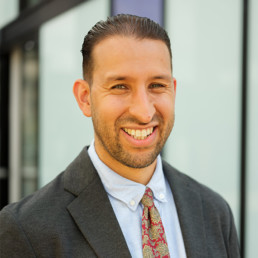
Written by Mohamed Abdallah
With almost two decades of experience, Mohamed started his journey in youth work and pupil referral units before spearheading groundbreaking inclusive practices and systems as a leader in an 'Outstanding' all-through mainstream school. Driven by a relentless commitment to positive change, Mohamed now dedicates his efforts to collaborating with school leaders across the nation as the Head of the Inclusive Leadership Course at The Difference.
“We are meaningful as individuals only through our interconnections”
Alexander and Conrad (2022)
The “success” I experienced as a youth worker, a practitioner in a Pupil Referral Unit, and as a senior leader in mainstream schools has at times been credited to me or my leadership, and that often makes me feel uneasy.
Partly because I experience imposter syndrome on a regular basis. But mostly because everything that “I have achieved” only happened through collective efforts.
It was only achievable because a community of people pooled together their desire, commitment, skills and knowledge to make a difference to the lives of children.
And this is why I don’t believe in individual heroes or saviours.
It sounds like I’m being a little contrary, but I hope that when you get to the end of this post it will be clear that what I am proposing instead is so much more liberating, freeing us from the idea that success is a purely individualistic journey. I think the opposite is true, that the collective efforts are more empowering than the individual endeavours of one.
KEY INGREDIENTS
Most of my childhood and teenage years were spent on Studley Estate in Stockwell. And to this day, that time remains one of the most significant chapters of my life. And it is the sense of community I experienced there which has become an integral part of my identity. It influenced how I grew, how I socialise, how I make decisions, and where I feel a true sense of belonging. It is also where I worked out what my skills and qualities are and helped me develop a wealth of knowledge about my community.
Throughout my life, whether as a child on Studley Estate, a youth worker in the community, or as a senior leader within schools, there are three key ingredients that formed an active and healthy community which stood out for me. These three ingredients are: DISCOVERY, COLLABORATION and ACTIVITY
Let me share their significance using a personal example from my childhood.
THE PEN
The Pen, the football cage right in the heart of our estate.
Discovery
As a child, I discovered a community of children who played regularly in the Pen and shared the same passion for football. It became our meeting point after school and on weekends, it fulfilled our need for play and socialisation through football. The discovery of the Pen and our shared love for football became our major connection.
Within our little community of talented footballers, we recognised and celebrated our differences. Some of us supported different teams (I’m a lifelong Liverpool fan), but our shared passion for football forged a bond that transcended those differences. We had an instant connection, rooted in our passion and knowledge of football and our ability to play the game.
Each of us brought something unique to the table. I play as a defender, and that was a valuable asset in a team full of players who wanted to play in attack. We recognised the unique skills and qualities that every player brought which in turn helped us create a space where everyone felt safe, where a shared passion and a common purpose thrived. We discovered our purpose, to have fun through the medium of football.
Collaboration
Looking back, reflecting on us as young children, it was incredible how well we collaborated with one another. We organised ourselves into teams, we agreed on how long a game should be, and we always accepted the result of a game without any adult involvement.
The centre of the Pen became our arena for collaboration, where we waited until everyone who wanted to play had arrived before selecting teams. It was a joint effort, facilitated by everyone present in The Pen at that moment. We recognised that each person who joined us was not only a football player but also an active agent in creating the ideal space for play.
We understood, even at a young age, that leadership could emerge from anyone, regardless of age, background, or footballing ability. We acknowledged the leadership potential within us all.
Activity
And then, we played, we mobilised our assets into collective activity.
We acted collectively in our game, where there was fairness, equity and trust. And though the game was always competitive, we always prioritised fun. Without the intervention of adults, we treated each other with mutual respect, accepting the game’s outcome and naturally resolving any conflicts that arose.
This collective activity involved every single one of us, as we recognised that to play a game of football it required the collective participation of all of us.
We discovered each other and our assets, collaborated in shaping teams, what type of game we would play, and engaged in the activity of the game in a way that was organic and purposeful.
COMMUNITY
These key ingredients can work for any community, including school communities.
Discovery is at the heart of every strong community.
It means discovering how and where people may have a sense of belonging, forming friendships, and feeling supported in their growth and development, discovering their own assets and capabilities. It’s about discovering spaces where people can come together, share their experiences, and provide a nurturing environment for children.
Opportunities to discover spiritual connection, helping people to collectively share values, wisdom, their gifts and connect to much needed resources, services, and opportunities for personal and community development.
When we foster genuine discovery which lead to connections among different groups, we create a tapestry of relationships that weaves us closer together.
Collaboration is essential for community growth and progress.
It means working together on projects, initiatives, and events that have a positive impact on people’s lives. Sharing skills, knowledge, and experiences, and creating a collective pool of wisdom and expertise. Collaborating contributes to the support of one another, exchanging ideas that work toward common goals addressing social issues to promote inclusivity, and create a sense of unity.
When we collaborate, we tap into the diverse strengths of our community and achieve outcomes that are greater than what any individual or group could accomplish alone.
Activity is about taking collective action and empowering every individual within the community to contribute to its well-being and success. It means staff, children and families being active participants in decision-making processes, having their voices heard, and realising their potential as change-makers.
They can collectively act by engaging in volunteerism, advocacy, and community-building activities alongside the local community. Acting together can foster a culture of empathy, respect, and social responsibility within school communities. And in turn promoting social justice and supporting those in need by empowering them through their assets. Most importantly a school and local community taking ownership of their community’s future.
When we act collectively, we create a sense of agency and shared responsibility, leading to a stronger, more resilient community.
BY THE COMMUNITY
To be a community member is to care, to take responsibility, to acknowledge your collective power.
To be a community member is to cultivate meaningful connection to the numerous relationships and institutions on our doorstep.
So, I want to return to where I started.
Our communities are shaped by our interactions, our relationships, and the wisdom we share with one another. When we achieve something, it is because we have worked with others, supported one another, shared resources and acted together.
And this is why I don’t believe in individual heroes, whether they are people or institutions. Because it is the collective efforts of many that is heroic. It is our collective power that creates sustainable change.
Not a single person.
It requires collective risk taking to effect change. It doesn’t happen overnight, it takes time, but it is sustainable. It is designed by the community; it is done by the community, and it is sustained by the community.
If you are curious to learn more about Drawbridge and how we can help schools foster meaningful community engagement? Feel free to reach out to me at mohamed@drawbridge.org.uk.
Navigating School Life
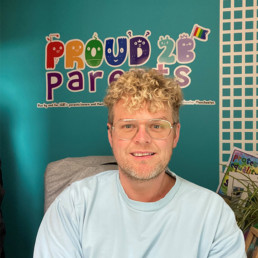
Written by Matt Taylor-Roberts
Matt Taylor-Robert (He/Him) is the Founder and Managing Director of Proud 2 b Parents and with his husband, Matt is an adoptive parent to their amazing son. He feels privileged to work for a regional adoption agency as an independent panel member and has previously worked for an independent foster agency within the same role. However, he had to step away from this role due to becoming a foster carer for this agency. Matt has previously worked within Children's Services for a local authority. To find out more about Proud 2 b Parents please head over www.proud2bparents.co.uk.
As a gay dad, I embarked on a remarkable journey when my child entered school. From the early days of reception to the transitions and milestones of Year 1, I’ve witnessed firsthand the joys, challenges, and triumphs of being an LGBTQ+ parent in the educational system. I therefore wanted to share my experiences, insights, and reflections, shedding light on the unique journey of a LGBT+ parent navigating their child’s schooling.
From the first day of reception, I was determined to create an inclusive environment where my child would thrive. I approached the school teachers, emphasizing the importance of embracing diversity and promoting acceptance among all. I was pleasantly surprised by their open-mindedness and commitment to fostering an inclusive atmosphere. They then looked to me to answer their questions and point them in the right direction of equity and inclusion.
Throughout the early years of schooling, I discovered the significance of building strong relationships with teachers, other parents, and school staff. By being open about my family’s structure, I paved the way for understanding and acceptance. I actively engaged in school activities, volunteering my time and participating in parent-teacher meetings to establish connections and develop a sense of community. I, myself, joined the board of governors, while my partner became the chair of the PTA, ensuring we echoed the ‘normality’ of our family.
As my child progressed through reception and Year 1, I encountered occasional misconceptions and stereotypes surrounding LGBTQ+ parenting. I sometimes took these opportunities to educate and enlighten, sharing our family’s story and dispelling any doubts or concerns. Other times I was exhausted from educating others in the playground and just wanted to stand quietly in the rain, waiting for my ‘baby’ to finish school for the weekend.
Fortunately, my child has not faced overt bullying or bias but we have heard comments such as ‘why do you have two dads’, ‘are they your two dads’ and he has always been the child used for ‘every family is different’.
In Reception and Year 1, schools often organise events and activities that celebrate families, we always ensured one of our son’s parents were there to represent his family and that he had a cheering face in the crowds. We went to ‘Mother day or special person day’ events and planted seeds and enjoyed afternoon tea, as well as engaging in ‘fathers day’ sports activities.
We always felt that collaborating with teachers was pivotal to ensuring my child’s educational experience was positive and affirming. Regular communication, sharing important milestones, and addressing any concerns or questions were key aspects of this partnership. By fostering a strong parent-teacher relationship, we ensured our child received the support they needed to flourish academically and emotionally.
Looking back on the last two years of my child’s journey through school, I’ve witnessed the power of acceptance, education, and collaboration in creating an inclusive environment. While challenges may arise, embracing diversity, building relationships, challenging assumptions, and advocating for inclusivity have proven transformative.
By sharing my experiences, I hope to inspire other LGBT+ families to approach their child’s school journey with confidence, knowing that their unique perspectives and experiences contribute to a more accepting and inclusive educational environment for all.
‘I’m so glad we have one of you here!’
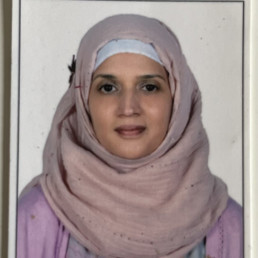
Written by Nabiha Mohamed
I am a British born Muslim Pakistani Geography teacher, who loves rocks and the Marvel Universe. I have spent 13 years living in Abu Dhabi but have now returned to the UK and am living in Bristol. I have taught in both comprehensive and independent schools, both of which I have enjoyed very much. I am a creative being who overthinks everything! I love to learn, and I have recently woken up to the fact that I am one of the few teachers of colour in this country and am now feeling the responsibility of this weighing heavy on my shoulders. Keen to ‘make a difference’ in the schools, I would love to connect with other teachers of colour in the UK.
We have been hit with comments like these throughout our lives. We have become accustomed to these ‘microaggressions’ in every aspect of our daily routines, and by ‘we’, I mean, people of colour.
As a British Asian Muslim woman (that’s a lot of labels already) born and raised in this country, I had never heard of the term ‘microaggressions’, until about 2 years ago in a CPD session at school. It was a turning point for me, in my career and my personal life. I have since been educating myself around the topics of unconscious bias, microaggressions and sense of belonging, particularly in schools. It’s been a rollercoaster ride since then, highs and lows in my teaching career, in my understanding of the issue and trying to work out how best to teach students to be assertive and staff to be ‘awake’. I am no professor in this area, I am not perfect, but I have grown to become passionate about this topic as one I can relate to and hopefully, an area I can help change in schools.
I have come to realise that many people who fire microaggressions at you, are often wonderful, kind, well-meaning people. They just don’t think about the gravity of their words; if you did have the courage to call them out on their inappropriate comments, they would be utterly devastated, which also makes us hold back on speaking up. Three recent examples I can think of (all said by adults):
- I can never learn the names of the girls who wear hijabs, they all look the same.
- I’m so glad we have one of you here now at school, the kids really needed someone like you.
- I loved culture day; it was my favourite day of the year! I loved all the costumes students wore; they were beautiful.
Costumes? I don’t wear my salwar kameez on Halloween, love.
I have delivered CPD sessions and assemblies on Unconscious Bias and Microaggressions to both staff and students recently, with the aim to give students of colour the confidence to speak up and say, ‘that’s not okay’ and to educate teachers on what many of their students go through daily as they go about their lives.
The thing is… I said in my assembly that I promised myself, whenever anyone was to say anything inappropriate directed at me, I would speak up and tell them. If ‘we don’t do this’, I said, ‘things will never change.’ Did I speak up when the above microaggressions came my way? Shamefully, no I did not. WHY, oh WHY did I not say anything?! Because, they were all lovely people who didn’t mean any harm. Because I, aged 47, did not know how to handle the situation at that exact moment, and if I couldn’t, how could I expect a child to?
However, I want to break the cycle. I want to have the confidence to say ‘errmmm, no’, and I want to teach students to be able to do the same in a respectful way, but I don’t know how to. We have school policies on explicit racism but there is nothing in means of reporting the implicit microaggressions from students or staff. Should there be? Is there a need? Do we ask our EDI Leader to speak to the guilty ones or should we have the guts to do it ourselves? But the interesting, or annoying thing amongst these questions in my head is, why am I struggling to speak up like I am the guilty one? I haven’t done anything wrong.
Exciting changes in the English Curriculum
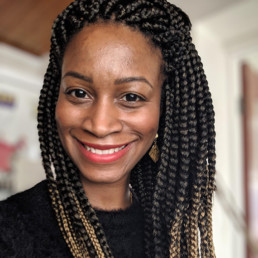
Written by Samantha Wharton
Samantha is a seasoned educator from East London, with ancestral roots tracing back to the Caribbean nations of Antigua and Guyana. She brings a wealth of academic achievements, including a degree in Communications and Media from Brunel University, a PGCE in English and Drama from the Institute of Education at University College London, and an MA in Black British Literature from Goldsmiths University.
English teacher Samantha Wharton takes us through some of the exciting changes to the English curriculum – featuring stories of the Windrush generation.
As well as it being the monumental milestone of 75 years since the Windrush ship docked at Tilbury forever changing the fabric of the nation; this year 2023, also marks significant changes in the English curriculum. For the first time, two playtexts by Black British female writers will feature on the English specification across three exam boards! AQA, Eduqas and OCR have added Leave Taking by Winsome Pinnock and The Princess and the Hustler by Chinonyerem Odimba to their collection of texts for examination in 2025 (available to teach THIS September).
The play Leave Taking is considerably significant in its relations to the Windrush as the writer Winsome Pinnock foreshadows some of the issues that later arise in the 2018 Scandal. The play written 1997 and produced at the National Theatre (marking the first black female playwright to have a production in this space) tells the story of Enid – a woman in her forties that arrived in England during the Windrush era. She raises her two daughter’s Viv and Del in this new British landscape where she navigates some of the challenges of being Black in Britain. I believe this is a wonderful play that documents an important story that needs to be heard. It is part of our shared British recent history. It shares the universal themes of migration, parent child relationships and belonging. It’s a text that is accessible to all GCSE students and a play that young people will relate to – especially the parent/child clashes and expectations that parents have for their children.
This is a huge change in the curriculum and one that I feel is much needed. As a teacher of 18 years I have seen many changes in the curriculum that to some extent have narrowed the world scope for young people, especially those that do not read independently. There was very little to no diversity reflected in the texts available at GCSE in particular so this is incredible. I am excited to be teaching this play at my school: St Angela’s Ursuline in London, where we will be part of a pioneering group to teach this text in the first year of official study!
I believe that diversity in literature and a range of texts help to foster a love of reading. Generally, readers like to make observations about others and escape to new places through literature. Novels are our gateway to other cultures and ways of life that we may not be able to physically be a part of. It is important that students have this exposure to different texts within the classroom and not just as part of reading for pleasure.
I was also fortunate to be commissioned by Nick Hern Books alongside Lynette Carr Armstrong to create a study guide for Leave Taking. Combined we have over 50 years of teaching experience and have created a resource that will support the learning of this text for students and will also provide a source for teacher’s planning to teach this text in the future.
I encourage teachers, parents and young people alike to engage with these stories! They are an important part of our history and need to be heard!
For access to Leave Taking (play and guide) as well as AQA conversations for teachers see the following websites:
Text: https://www.nickhernbooks.co.uk/leave-taking
Study guide:https://www.nickhernbooks.co.uk/leave-taking-gcse-student-guide
AQA: https://www.aqa.org.uk/professional-development/search?f.Themes%7CV=Spark
The Power of Networking

Written by DiverseEd
Diverse Educators started as a grassroots network in 2018 to create a space for a coherent and cohesive conversation about DEI. We have evolved into a training provider and event organiser for all things DEI.
#DiverseEd Table Photo
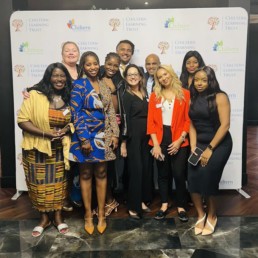
This Friday night we joined the team at Chiltern Learning Trust for their annual Racial Equity Network Dinner (#REND). We had been unable to make it the last two years running despite really wanting to attend and support it, but this year we were able to make it happen.
We sponsored a Diverse Educators’ table and invited some of our collaborative partners from the race section of our DEI DIrectory to join us on our table. It was brilliant to finally all be together in person! It is not very often we are in the same room, at the same time – the energy was palpable and we were very much the ‘naughty table’ as we needed to take advantage and connect whilst we could.
Thanks for joining the team from #DiverseEd:
- Nadine from Aspiring Heads
- Rhia from Black Teachers Connect
- Jemma from Let’s Start a Conversation Today
- Aretha and Youlande from Mindful Equity
- Louise and Marcus from MixEd
Getting to Luton for 6pm on a Friday night, at the end of a long year and a hard term, was not for the faint-hearted. Our table travelled from Manchester, Nottingham, Birmingham, Watford, London, Kent, the New Forest and Bath to attend the event. The journey to the event is very much a metaphor for the direction of travel of the work – it is non-linear, frustratingly slow and there are lots of obstacles to navigate including poor conditions and route closures.
We were delighted to be in the room where it was happening, along with 480 other attendees, who all care about and are committed to affecting change when it comes to racial equity in the education system. We had a lot of other connections and collaborative partners at the event including:
- Diana from the Academy of Women Leaders
- Frankie from BAMEed SEND
- Albert and Johnoi from Black Men Teach
- Iona and Sam from Edurio
- Daryl from Flair
- Paul and Andrea from the Institute for Educational and Social Equity
- Penny from The Linking Network
- Bukky, Flora, Yamina, Kiran and Emma from #WomenEd
In the more formal part of the event before the eating and networking started, there were a series of short presentations from a range of speakers:
- Sufian Sadiq – shared a heartfelt reflection on the fatigue and frustration of how slow the rate of change in this work is for him, his peers and his family. His call to action was for solidarity.
- Professor Paul Miller – shared the systemic data to highlight the structural and societal barriers for people of colour in our sector. His call to action was for allies to leverage their power.
- Sarah Owen MP – shared a personal narrative of being a biracial pupil and how this work could have helped her journey as a pupil but also now as a politician. Her call to action was to create greater belonging.
- Dr Patrice Evans – shared a quote from Obama and reflected on her journey being the only black woman in many spaces. Her call to action was to collect the stones and to use them to build empires.
- Hannah Wilson – shared her awareness of being a white person speaking to a room of global majority and then used the space to amplify the organisations in the room doing brilliant work in this space. Her call to action was to join the coalition.
- Assistant Professor Derron Wallace – shared a comparative lens to the data and the activity in the US compared to the UK and questioned what our collective strategy for racial equity is. His call to action was that everyone needs to own the role they have to play.
In the less formal part of the evening it was great to see, chat to and smile across the room at Alison from CCT, Mary from Myatt and Co, Tom from Ambition School Leadership, Phillippa and Sajid from PACT, David and Ena from Venturers Trust, James and Sharon from Inclusive MAT, Antonia and Bhamini from Pioneer Educational Trust, Adam from OTSA, Thahmina and Omar from CST, amongst others.
#REND is a brilliant example for the power of networking. The event was a magnet for people seeking a shared vision, a unified purpose, a collective agency. Together we are stronger, and we can go further.
Do check out the social media posts via the event hashtag #REND and put the draft date for the 2024 #REND event in your diaries: Friday 12th July. We will have a table there again and will invite new partners from our DEI Directory to join us. It would be great to see you there and they are increasing capacity to 600 for next year’s event.
DEI Directory Flyer
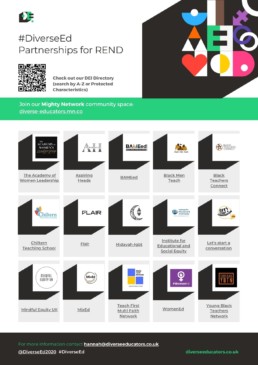
The Misuse of Gender
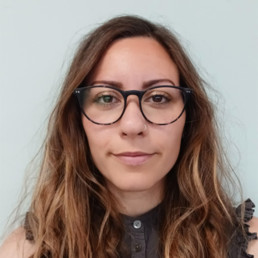
Written by Katy Carpenter
Katy is a Pastoral Lead and EDI Lead in a Birmingham primary school. She is currently studying for her PhD in Education, researching how children explore and negotiate gender through creative writing.
Graham et al (2017) wrote that gender is typically constructed within a binary of two natural biological entities – man and woman. As such, it is very easy to conclude that gender is inherently linked to one’s sex. Even a modern understanding of gender as a social construction and a form of expression finds itself difficult to detach itself, semantically, and conceptually, from one’s being male or female. The language around gender remains restricted to a range of words pertaining to masculinity and femininity, a binary mode of thinking which reduces our positioning of people who deviate from the gender norm as either masculine women or feminine men. It seems that without this binary, we would find it very difficult to understand gender-diverse people.
How have we gotten here, why is this the case, and need it be? Our historical, social and cultural norms have made it so that gender appears to be indistinguishably linked to sex, and historically, sex and gender have been treated as synonymous in law and culture (Case, 1995). Even contemporary culture continues to conflate sex and gender. On an application form I will often be asked to identify my gender, and drop-down options usually are a choice of male, female, non-binary, or prefer not to say. Now if what HR wanted to know was how I express myself, they could change these options to masculine, feminine (due to where we are in history these terms are still helpful in denoting a style or aesthetic), non-binary, prefer not to say, and in addition they might even add a few other options like flamboyant, assertive, glamorous. Of course, this would be limitless and unmanageable. It also wouldn’t be very useful to HR because when this question is being asked, what they actually want to know is my sex assigned at birth, or indeed, whether I don’t find this label relevant to my ability to do the job, in which case I might opt for non-binary or even the as question-raising option, prefer not to say.
The conflation of sex and gender is problematic. When we use the terms interchangeably, people end up confused. I treat gender as a social construct, historically derivative of the male/ female sex binary but actually conceptually distinct from it. A popular view of gender is one of whether you’re male (a biological occurrence), female (a biological occurrence), or reject those biological categories (a social occurrence). The drop-down boxes on application forms suggest that this is also an institutional view of gender. However, an important distinction between sex (meaning one’s sex assigned at birth) and gender (meaning one’s expression- which has both personal and political motivations) needs to be upheld, else we need not have two terms at all. A semantic and thus conceptual conflation of sex and gender subsequently leads to a confusion of the debate around matters pertaining to gender. Indeed, one of the outcomes of this conflation is that when I talk about gender with my friends and colleagues, I am taken to be discussing transgender matters. Channel 4’s Gender Wars, which aired earlier this summer, looked promising in bringing discussion about gender to a wider audience than academics and people leading EDI work, however in focusing on the debate around the trans community, it unfortunately upheld the impression that all debates around gender are debates around trans issues. The gender discussion is much wider than this, and there is a difference between the matter of being transgender and the critical questioning of the boundaries of gender presentation.
In relying on a binary between masculinity and femininity when developing a framework for conceptualising gender, even those who accept and embrace gender fluidity are restricted to this idea of two ends of a linear spectrum and everything else in-between. I suggest a different way of picturing gender (because let’s face it, things that come with a picture are always easier to understand). I suggest an egg, where male, female and intersex people reside centrally in the yolk, and the white circle around the outside is the space of gender – how one expresses oneself. By removing the image of the line, one form of gender presentation is no nearer to or further from any one sex than it is another, and thus releases itself from the binary of masculine and feminine forms of presentation.
In her 1990 book Gender Trouble, Judith Butler controversially questioned the category of woman. This was contentious because it destabilised ‘woman’ as a protected and distinguished category, with fundamental difference to men, something centuries of feminist work unwittingly embedded. This idea set ablaze the acknowledging of gender (in a feminist context, the doing of womanhood) as a process of construction – gender as a doing rather than a being, separate from sex. This was called gender performativity. With this different understanding came the possibility of a critical evolution around identity and performance. There is much yet to be explored.
References
Butler, J (1990) Gender Trouble. Feminism and the Subversion of Identity. Routledge, New York.
Case, M. A., (1995) Disaggregating gender from sex and sexual orientation: The effeminate man in the law and feminist jurisprudence. Yale Law Journal, pp.1-105.
Channel 4 (2023) Gender Wars.
Graham, K., Treharne, G.J. and Nairn, K. (2017) Using Foucault’s theory of disciplinary power to critically examine the construction of gender in secondary schools. Social and Personality Psychology Compass, 11(2).
Pride Matters: 5 actions for inclusion and quality for leaders
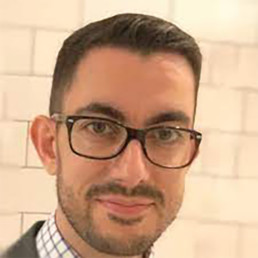
Written by David Weston
Co-CEO of Teacher Development Trust; Chair DfE CPD group; author, campaigner and speaker.
The annual month of pride comes around and it can be a difficult one for school and system leaders to tackle. The will is there, so what’s the best way? How can LGBTQ+ inclusivity be approached effectively and sensitively with staff, and with children and young adults?
In this article, David Weston, Teacher Development Trust’s co-CEO (Innovation & Research), draws on his experience as a founder of an LGBTQ+ teacher community, a trainer for LGBTQ+ school leaders and as a campaigner for LGBTQ+ rights. TDT is a national charity that supports schools to tap into the power of school improvement through people development, inclusive of all.
It’s worth reflecting first that while parties and celebrations are often the visible part, this month is an annual moment to focus all of humanity’s mind on what we still need to do to remove barriers, decrease inequality and create greater inclusion for all people who fit under the LGBTQ+’s broad rainbow. Even here in the UK, pride matters:
- Because countless LGBTQ+ individuals are still subjected to conversion therapies that attempt to erase their identity, and the government’s promises to deal with this remain unfulfilled.
- Because LGBTQ+ children are much less likely to receive proper relationship and sex education that helps them navigate their lives
- Because many LGBTQ+ youth are at a higher risk of homelessness due to family rejection.
- Because LGBTQ+ people often face discrimination in healthcare, leading to worse health outcomes.
- Because transgender individuals are often denied their right to self-identify and face additional barriers in accessing legal and medical support.
- Because LGBTQ+ individuals still face significant barriers in the workforce, including wage gaps and discrimination.
- Because LGBTQ+ history is often overlooked or omitted in education, leaving many unaware of the community’s contributions, rich heritage and ongoing struggles.
- Because suicide rates among LGBTQ+ youth are disproportionately high, which speaks to the urgent need for societal acceptance and support.
- Because many countries around the world still criminalise homosexuality, and LGBTQ+ individuals face persecution and violence, whether as citizens or even as visitors.
There has, of course, been a huge amount to celebrate as well. Pride marches and celebrations now are also a joyful and colourful reminder of the progress made. The ability to legally live freely, to love who you want, to marry, to have children – all these things represent such extraordinary progress. But no matter how far things have come, there are always hurdles that others won’t face. The emerging sense through childhood of feeling different, the attitudes of some groups and traditions that range from making LGBTQ+ people feel unwelcome all the way to genuine fear for their lives.
As a leader, making sure that staff and young people feel included is not just a moral imperative, it has genuine advantages. When adults or children feel afraid to be honest about their lives, constantly policing how they look, what they say or how they react in case they give something away, it affects their performance, their learning, their wellbeing. When workplaces and classrooms feel inclusive, open, with a celebration of difference, it allows everyone to give their best.
Here’s 5 actions that every leader can take:
- Policy Review and Implementation: School leaders should ensure that policies are inclusive of LGBTQ+ people. This includes anti-bullying policies, codes of conduct, dress codes, and any other rules or regulations. It should include the way that the school recruits and supports staff and pupils. These policies should explicitly mention protections for LGBTQ+ individuals and should be enforced consistently.
- Staff Training: Provide regular training for all staff on LGBTQ+ issues, ensuring they understand the importance of inclusive language, the challenges that LGBTQ+ students and staff may face, and how to address discriminatory behaviour. This knowledge will help them to create a more supportive environment for LGBTQ+ students and staff.
- Student & Staff Support Services: Establish or strengthen support services for LGBTQ+ staff and students. This could include setting up an LGBTQ+ Alliance (or similar group), providing counselling services with counsellors who are trained in LGBTQ+ issues, and ensuring that health and sex education classes are inclusive of LGBTQ+ experiences.
- Promote Visibility and Awareness: Celebrate LGBTQ+ History Month, participate in Pride events, and integrate LGBTQ+ history and contemporary issues into the curriculum. This helps to normalise LGBTQ+ identities and experiences and can contribute to a more inclusive school culture.
- Engage with the Wider Community: School leaders should communicate with parents, carers and the wider community about the school’s commitment to LGBTQ+ inclusion. This can help to build a supportive environment not only within the school but also in the students’ lives outside of school.
Together, we learn and we evolve. If you would like to explore how TDT can help your school or trust to embed a thriving, research led culture of professional development that sticks, please get in touch.
Footnote:
LGBTQ+ is an umbrella acronym that includes people who identify as Lesbian, Gay, Bisexual, Trans*, Queer (or sometime Questioning) and the plus indicates that it encompasses all other related communities around gender and sexuality, including those who are Intersex, Non-binary, Asexual, Aromantic, Pansexual and more.
Addressing the Legacy of Section 28 & Supporting Diverse Families
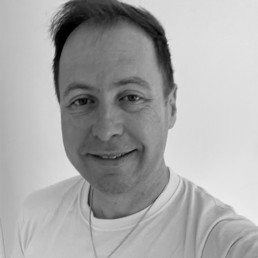
Written by Troy Jenkinson
Equality, Diversity & Inclusion Specialist, children’s author, public speaker and former Primary Headteacher and Executive Headteacher. https://troyjenkinson.com/
Today, more than ever, we should strive for equality in our schools. Seeing how LGBTQ+ culture has been embraced in colourful Pride events and the peppering of queer characters in the media, you could be forgiven for thinking we had turned a corner in equality. We have come a long way, triumphing over the Section 28 policy (the 1988 amendment to the UK Educational Bill silencing queer teachers) and the partial decriminalisation of homosexuality. We have fought hard for rights to marry, adopt and live our lives showing our “True Colors” to quote Cyndi Lauper.
Digging deeper, you realise how far we still need to go. The ILGA (2020) reports 70 countries still criminalise homosexuality; 6 punishable by death, 57 with lengthy prison sentences. Only 68 countries offer broad protection for their LGBTQ+ population. High profile media events point to continued educational need. Florida’s “Don’t Say Gay” Bill (March 2022) mirror’s Thatcher’s vindictive 1988 Section 28. We have not learned. Cripplingly unfair acts such as harsh laws to imprison LGBTQ+ people for life in Uganda reported by the BBC in March 2023 marginalise our community.
The UK once topped the ILGA table of European countries for LGBTQ rights (2015), but slumped 14 places by 2022, accredited to governmental failures and its abandonment of its promise on gender recognition and equality plans. The statistics speak for themselves. Galop (2021) reported “LGBT+ hate crime is disproportionately on the rise in the UK.” Two thirds of LGBTQ+ people experienced homophobic violence or abuse. This likelihood only increases for ethnic minority and trans people.
The question we have to ask ourselves is; why?
Bullying is borne from ignorance. Section 28 has long-lasting effects on our educational establishments. Stonewall reports LGBTQ+ students are twice as likely to have been bullied than their non-queer compatriots (42% compared to 21%). Teachers echo this; 85% of secondary and 45% of primary staff acknowledge homophobic bullying in their schools.
With less than half of LGBTQ+ students (48%) experiencing positive messaging to support them, it is high time we as educationalists did something about it. The government introduced Relationships and Sex Education Guidance (2019) but left it open to interpretation stating:
“Schools should ensure that all of their teaching is sensitive and age appropriate in approach and content. At the point at which schools consider it appropriate to teach their pupils about LGBT, they should ensure that this content is fully integrated into their programmes of study for this area of the curriculum rather than delivered as a standalone unit or lesson. Schools are free to determine how they do this, and we expect all pupils to have been taught LGBT content at a timely point as part of this area of the curriculum.” (DfE, 2019)
Robert Long (2023), concludes schools are still not required to “promote” same-sex marriage:
“Governors, teachers and non-teaching staff in schools, parents and pupils, are free to hold their own religious or philosophical beliefs about marriage of same sex couples.” (Long, 2023)
Schools need help to sensitively support all pupils and tackle the endemic victimisation. They need to address inequality and inclusion in their curriculum and how they support diverse families. There is little guidance for parents themselves.
From my own experience of coming out, my parents found it traumatic; relating it to grieving as they tackled a myriad of questions, hyped by media negativity:
- Would I grow up happy and fulfilled?
- Would I be bullied?
- Would I die of a terrible disease?
- Would they have grandchildren?
Though this was in the 2000s, it is still a very real issue for some individuals today.
Recently, I worked with international colleges supporting staff and students from countries with poor human rights for LGBTQ+ citizens. I became fascinated by the term “Straight Privilege.” Those not identifying as LGBTQ+ do not have to come out, or seek out role models in the public eye. It is an interesting concept to explore.
As a headteacher, influenced by Andrew Moffatt, I introduced weekly “No Outsiders Assemblies.” Using news images, I positively identified people who stood up for their rights or succeeded despite potential marginalisation. This ranged from Malorie Blackman’s interpretation of historical figure, Rosa Parks for Doctor Who and Jacinda Ardern’s maternity arrangements as New Zealand’s Prime Minister, to discussing the controversies of a gay kiss at the 2018 Winter Olympics.
Working with a family whose children experienced bullying for having same sex parents, inspired me to publish my first children’s book “The Best Mummy Snails in the Whole Wide World.” Since, I have delivered countless assemblies, workshops and key notes speeches aimed at fighting the corner and being the role-model, I never had in school.

